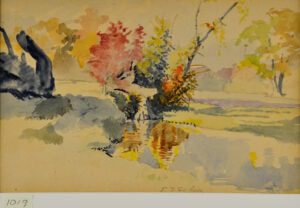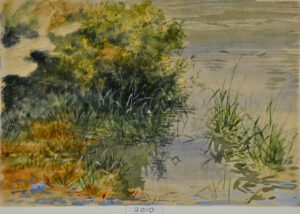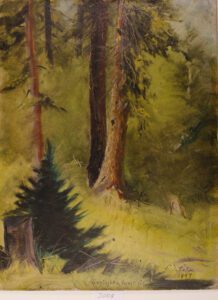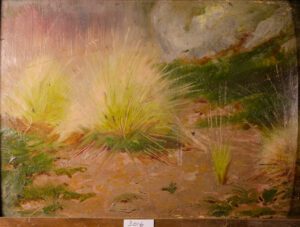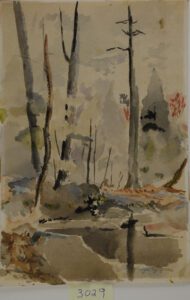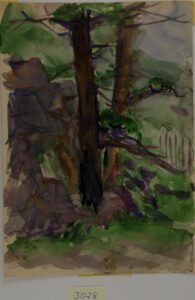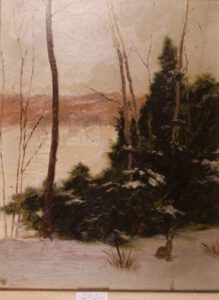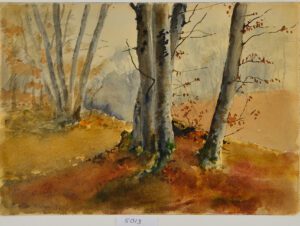Untitled Paintings by Seton – Click images to enlarge
Landscape painting has a surprisingly short history. That is, where nature itself is the subject, not as backdrop for human activities and architecture. H.W. Janson’s massive History of Art doesn’t even list “landscape” as a subject in the index. Neither does it list “naked people” as a subject, although perhaps it should given the number of works in that category.
In America, the first great landscape painter was Thomas Cole (1801-1848) although his major works include people (however small) or the works of people (buildings, etc.) Subline nature was to be seen in contrast to us, as something bigger than us, or as grand because we are the obvious observers. To be fair, people are useful for giving a sense of scale. Once Cole taught us to consider landscape as legitimate subject, Frederick Church (1826-1900) gave us gigantic scenes of untouched nature, that is, no us. Many more followed including Thomas Moran (1837-1926) who identified the American West as the landscape subject of choice. All overwhelmingly magnificent.
Landscape at Smaller Scale
Contrast this with the paintings of Ernest Thompson Seton who rejected the grandiose in favor of the intimate. His landscapes have more in common with still life, small vignettes, the tiny patch of forest of pond that you can’t see from the heroic landscape painters because you are too far away. The grand picture does not show the detail. Naturally, Seton, as an acute observer of nature, is concerned with the individual tree, flower, or animal.
You get nice views taken from the grand scale but learn next to nothing about the components which somehow, taken together, make up all that grandness. The human observer is insignificant in the big nature views, but a critical component at the micro scale of beholding a single birch or a tuft of grass in a pond.
Seton’s paintings, like his writing, depict us as a part of nature, not separate at all, but integrated into the scene as an observer along with him.
(All image rights to Seton artwork reserved by the Academy for the Love of Learning.)


